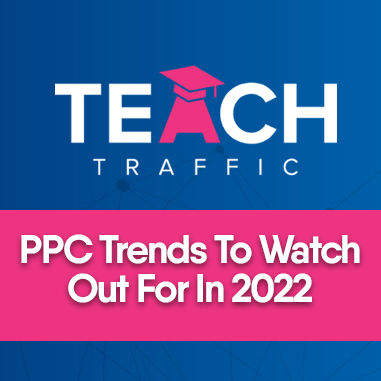PPC Trends To Watch Out For In 2022
Change is the only constant thing in the world. That said, Pay-Per-Click (PPC) is constantly changing and evolving. Trends this year will change the next year, so as an advertiser, it’s your job to be updated with the latest trends and also apply it to your business (if applicable in your niche).
In this article we will be listing the PPC Trends To Watch Out For in 2022, be sure to read up as it will help your business!
1. Artificial Intelligence (AI) Is Here to Stay and It’s Evolving
Technically, it’s not a trend, but since it’s evolving, it’s pretty important to discuss. AI continues to evolve and became an integral part of PPC campaigns. It helps us advertisers from A LOT of things.
Especially avoiding the manual stuff that we do in our ads from our campaigns.This stuff ranges from optimizing keywords, automating bids, applying auto-recommendations, to analyzing the performance of ads and campaigns. As you can see, AI quite vital to PPC campaigns and its going to continue to evolve.
2. The Rise of TikTok
Facebook, Instagram, and Twitter have been the biggest social media players, but of course it’s about to change with the rise of TikTok.
And it looks like it’s not stopping to pick up steam any time soon. That said, there’s a HUGE opportunity for PPC marketing here due to the audience engagement heavy approach of TikTok. And recently it partnered up with Shopify since they wanted to streamline some advertising process for business marketing strategies.
3. Audience focus content
For a while, PPC advertising was focused on algorithm-focused content. But same with PPC strategies and trends, these algorithms evolve as well and will be focusing on quality content for 2022.
These will challenge advertisers to change their marketing approach and look at the bigger picture: “How are we going to address what the audience wants and how do we retain this information to them”?
Yes, it sounds like more work for us advertisers, but personally we think it’s a step in the right direction and it’s something that should be taken seriously moving forward.
4. The Importance of First-Party Data
The dependence on pixels, tags, and cookies for marketing attribution seems to be less of a focus for 2022 for advertisers due to companies like Google and Apple are now restricting usage of the means of tracking consumer data.
With the updates that happened this year in iOS14’s cookie tracking and the looming deprecation of third-party cookies in Chrome, it will be most likely that other companies will follow this trend. First-party data will be heavily invested and valued in 2022 and will be the main means to integrate with your advertising efforts.
5. Ads Testing
With the end of of Expanded Text Ads (ETAs) looming over the horizon, advertisers should be testing with their ads now that ETAs are still available. Test Responsive Search Ads (RSAs) as well as by trying different pinning and messaging.
Advertisers will also need to look at the bigger picture and focus on their ads. Test ads that aligns to their intent instead of their target keyword.
6. Responsive Search Ads
In relation to number 4, Responsive Search Ads will be Google Ads main driver in their text ads as ETAs are about to get discontinued. Advertisers not using RSAs needs to start using it now to get ahead in the game.
Relying solely on ETAs will give advertisers a hard time as they need to change their approach in terms of their ad copies since Google Ads dynamically mix and match the 15 Titles and 4 descriptions of RSAs. So better start strategizing carefully as it will be the main ad format for Google Ads once they stop supporting Expanded Text Ads.
And always, TEST.
7. Smart Bidding
Experts predicted that this trend will take off even more in 2022. Manual tracking, campaign optimizations, and even budget allocations – all of these are possible with smart bidding with the use of machine learning.
Smart Bidding is meant to improve conversion rates with the use of automatic optimizations implemented on ads based on data of user behavior and trends.
